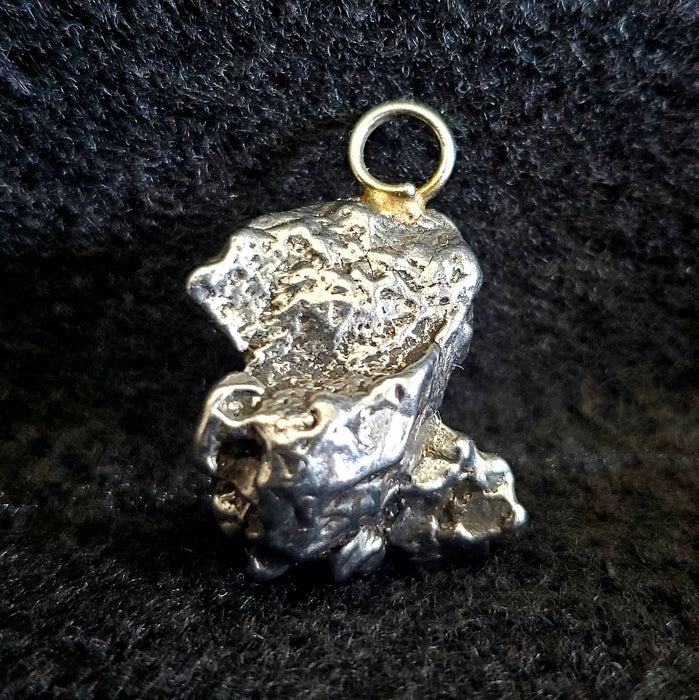
Campo del Cielo Meteorite Pendant
Receive ONE, random hand selected piece, each one is hand selected for quality and each piece is unique. Picture is representative of what you may receive, however actual piece varies.
Pendant approx. size: 1"
Location: Campo del Cielo, Gran Chaco Gualamba, Argentina, about 500 miles north-northwest of Buenos Aries. Latitude 27 degrees 39 minutes South, Longitude 61 degrees 44 minutes West.
Campo del Cielo meteorites are a collection of meteorites found in a 18.5 by 3-kilometer region near Campo del Cielo Argentina. These meteorites were part of a 300-ton fall estimated to have occurred 4000-5000 years ago. Since their initial discovery in 1576, 26 craters have been identified. Recovering approximately 100 tons of fragments, this is the largest meteorite discovery to date.
The fragments exhibit a notable concentration of inclusions for an iron meteorite, potentially leading to the eventual fragmentation of the initial meteorite. The average composition of Campo del Cielo meteorites includes 3.6 ppm iridium, 87 ppm gallium, 407 ppm germanium, 0.25% phosphorus, 0.43% cobalt, and 6.67% nickel, with the remaining 92.6% being iron.
Our Campo del Cielo meteorite specimens were lawfully acquired before Argentina's implementation of a law that forbade the export of all meteorites on January 1, 2008.

